
Kanu Statue Ming Era 15th-16th Century Shinsato City Museum
Tokyo National Museum from July 9 (Tuesday) to September 16 (Mon./Holiday), 2019
Special exhibition “Sangokushi” is held.
A preview for the media was held, so this time we will tell you how.
Manga, puppet theater, games … taken up in a wide range of fields, showing a variety of development “Sangokushi”. The point of departure is the Chinese history of “Three Kingdoms” and “Three Kingdoms”, which continues to be loved by people in a long history, and its popularity in Japan still remains unnoticeable. Kanu, Sakumo, Ryofu … There may be a lot of people who are passionate about the life of large-scale warlords.
The slogan for this exhibition is “Real Kingdoms” . In the case of the Mikuni period where there are few data and many of the facts are mysterious, the combination of selected artifacts and the latest research results is close to its true image, and construction of a new tribe of unique archeology beyond the past three kingdoms The goal is
What is the Three Kingdoms?
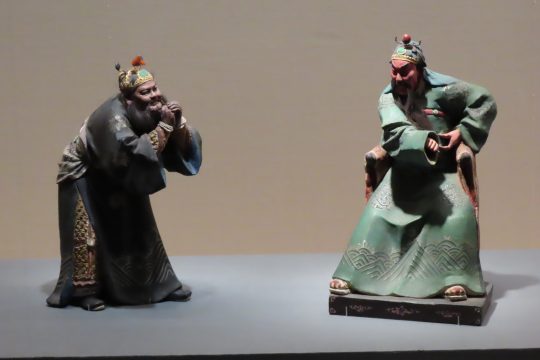
“Shanhe-Zhang Fei” Haru Yusaku Qing Dynasty-19th Century Tianjin Museum
Han Dynasty which lasted about 400 years before and after. However, the bribery and eunuchs became corrupt by holding an experiment, and social order began to be disrupted, with the outbreak of the yellow band (184). The Han Dynasty asked for the power of the powerful lords in an effort to settle the turmoil, and in response to this request, the Cao cay, Qi Bei, and the grandmasters were recruited. Soon they set up a mochi, a mochi and a mochi, and the shape of the world three minutes will be settled here.
“Sangokushi” is a story based on the Mikuni period in which they were active. The story of the Three Kingdoms now prevailing in the world is based on the reading “Mikuni Zhiyoshi” , which has been written in many of its main points later.
That famous scene sings! British Jews in the Legend

At the beginning of the exhibition, we introduce paintings and murals depicting familiar scenes
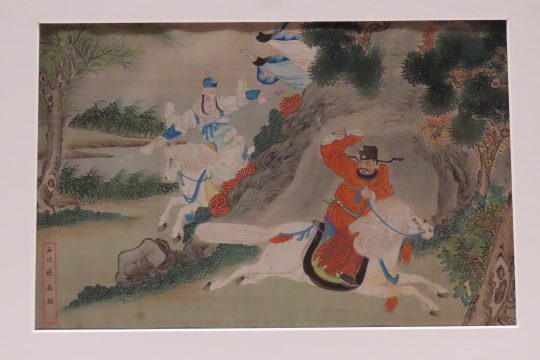
A scene from “The Three Kingdoms Dedication” (“The Three Kingdoms’ Historical Map”, Museum of the Tianjin Museum). Person who understands what scene is considerable Three Kingdoms
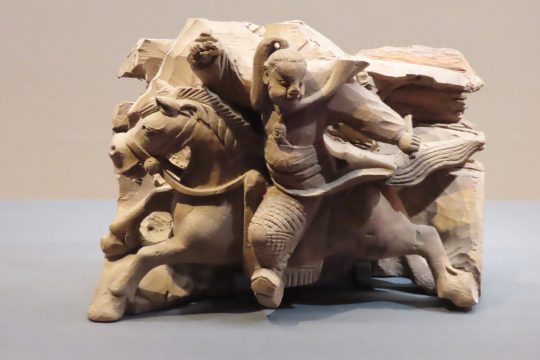
Qin Yun statue Qing Dynasty · 17th and 18th centuries Jinzhou City Museum
At the beginning of the exhibition hall, we display works based on the story of “Sangokushi” familiar to us. The appearances of the British players who have been burned in their minds from an early age are restored. This special exhibition “Sangokushi” is an exhibition that I want all beginners to see by all means, but this way of enjoying is a privilege of mania.
The above “Sayun Cloud” is based on an episode of Aoyun that runs in the enemy’s arm in a single mount to help the Lord’s son who is left behind in the battlefield. It is a great scene of the “three kingdoms” inevitable. Although this work is considered to be a part of the decoration of the building, the sculpture is simple, but the form of batting on a horse while holding a baby is vividly expressed.
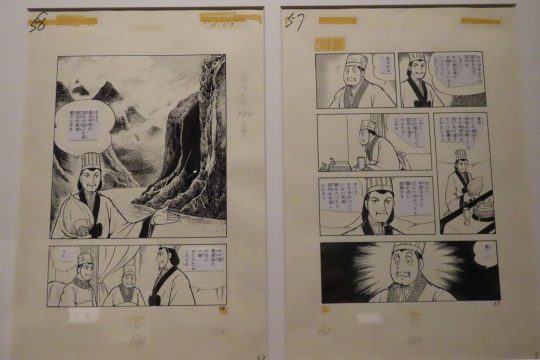
Exhibited original drawings of Miki Yokoyama’s “Mikuni-shi”
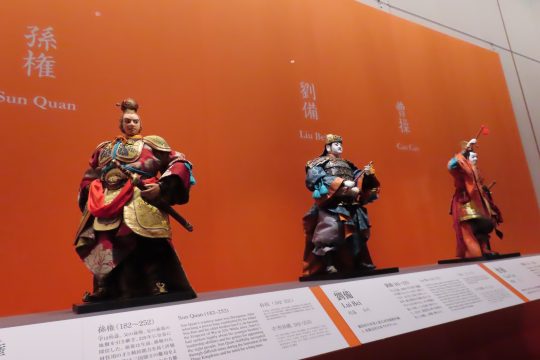
Kawamoto Kihachiro’s doll used in the puppet show “Sangokushi”
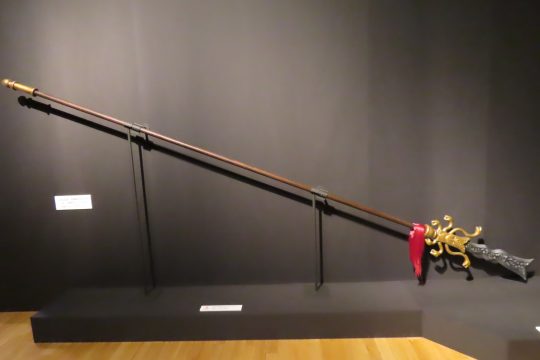
Zhang Fei’s weapon “Jabo” that appeared in the game. The serpent itself existed, but it is unclear whether it existed in the Three Kingdoms era
At the venue, along with “real” artifacts, he exhibited original drawings of the cartoon “Sangokushi” by Mitsuteru Yokoyama, and dolls actually used in NHK “Puppet Theater Sangokushi” by Kiharou Kawamoto. In addition, the characters of the highly popular game series “Mikuni Muso” will also participate in the war, and will decorate this exhibition. Not only deep Sangokushi enthusiasts, but also Sangokushi beginners interested in various media can enjoy it in an easy-to-understand manner.
Now, to “Real Three Kingdoms”
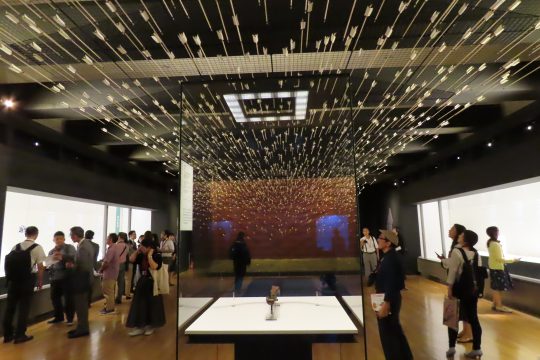
Chapter 3 room that reproduces the battlefield where arrows fly
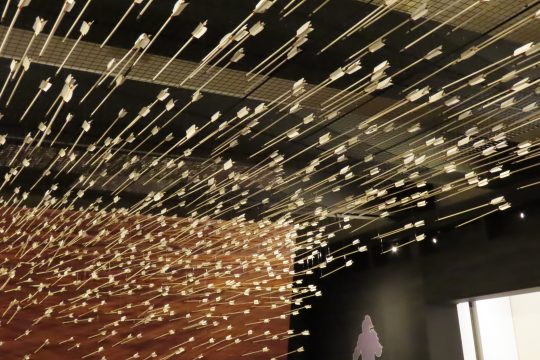
More than a thousand arrows were used
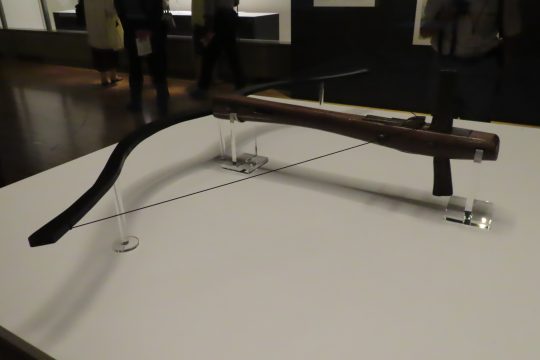
A “don” that shoots an arrow. So-called crossbow
Speaking of “Sangokushi”, it can not be said without the attraction of the battle. In the third chapter, we will display weapons from the three countries from Han and tell us “Real on the battlefield”.
When you step into the hall, the decorations are like arrows flying around the battlefield, and you feel like a red wall battle? !
The total number of arrows used is more than a thousand. The people who are stuck in the hull are real. The main weapons at that time were swords, swords, sylves, bows and arrows, but among them, stalks, which have a bow attached to their handle and trigger them to fire, have a strong killing power and played an important role.

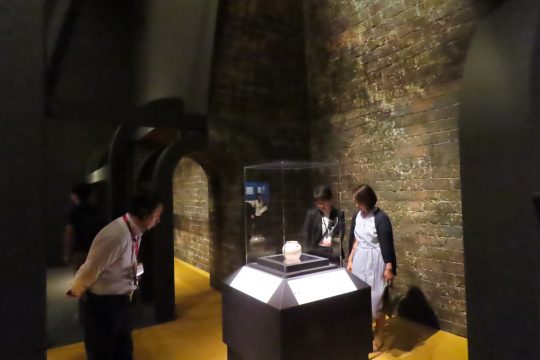
Reproduced in full size, “Saokai Takatsuki”
One of the features of this exhibition is a powerful exhibition space. The fifth chapter reproduces “Soo Cao Cao Cao Cao Cao Cao Cao Cao Cao Cao Cao Cao Cao Cao Cao Cao Cao Cao Cao Cao Cao Cao Cao Cao Cao Cao Cao Cao Cao Cao Cao Cao Cao Cao Cao Cao Cao Cao Cao Cao Cao Cao Cao Cao Cao Cao Cao Cao Cao Cao Cao Cao Cao Cao Cao Cao Cao Cao Cao Cao Cao Cao Cao Cao Cao Cao Cao Cao Cao Cao Cao Cao Cao Cao Ba You can experience the space in the mysterious tomb.
Cao Cao Cao was excavated in Anyang City, Henan Province from 2008 to 2009, and was originally named as Nishi Takaana No. 2 Tomb, but the location is consistent with the location of Cao Cao Cao in the ancient records Furthermore, because there was a stone monument with “Sei Takeo” pointing to Cao Cao as a burial product, it became certain to be Cao Cao.
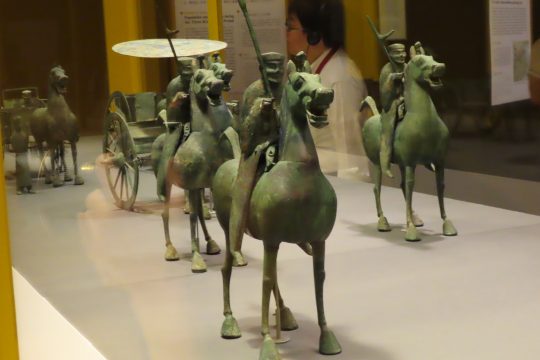
Ginseng Late Han Dynasty · 2-3 centuries Gansu Museum

“Golden Beast Bond Metal Fittings” Gohan Period / 2nd Century Kotobuki Prefectural Museum
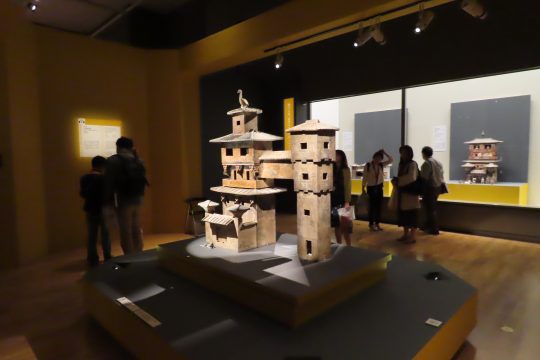
“Five Layer Granary” 1973, Chorusaku City Museum

The “Tiger-shaped Scorpio” (The Three Kingdoms, The Third Century Nanjing City Museum) was used in the great tomb of the temple.
In addition, the exhibition will feature about 160 latest archaeological findings from China. With the latest academic achievements, we are approaching the true image of the unknown Sangokushi.
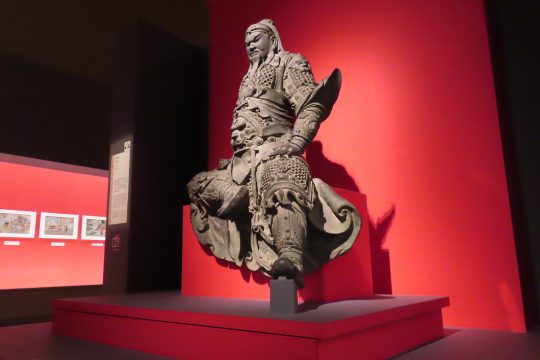
The stage of the Three Kingdoms was from the period of the 184th year’s yellow band to the reunification by the 280 years of the Xizi Dynasty. It is strange that the story of just a hundred years or so is transcended, transcending the country, and being told.
The exhibition will be held from July 9 (Tuesday) to September 16 (Mon./Holiday), 2019 .
It seems that everyone knows, “real” of the Three Kingdoms that nobody knows.
Whether you are a beginner or a Sangokushi fan, be sure to visit the venue!


It is a product sales corner that I want you to see personally by all means. A series of familiar characters such as Mitsuteru Yokoyama “Mikuni will” and the game “Mikuni Muso”
Outline of the event
| Exhibition name | Japan-China Cultural Exchange Agreement 40th Anniversary Special Exhibition “Sangokushi” |
| Session | July 9 (Tuesday) to September 16 (June, 2019) 2019 9:30 am-5 pm ※ Fri, Saturday until 9 pm (Admission is 30 minutes before closing) |
| closing day | Monday, July 16 (Tuesday) * However, July 15th, August 12th, September 16th will be opened |
| Venue | Tokyo National Museum Heisei Building (Ueno Park) |
| Fee for viewing | General 1,600 yen (1,300 yen), university student 1,200 yen (900 yen), high school student 900 yen (600 yen) Junior high school students and below free ※ () in the group rate of 20 people or more ※ Person with disability certificate and one carer are free |
| Official site | https: // sangokushi 2019. exhibit.jp/ |


